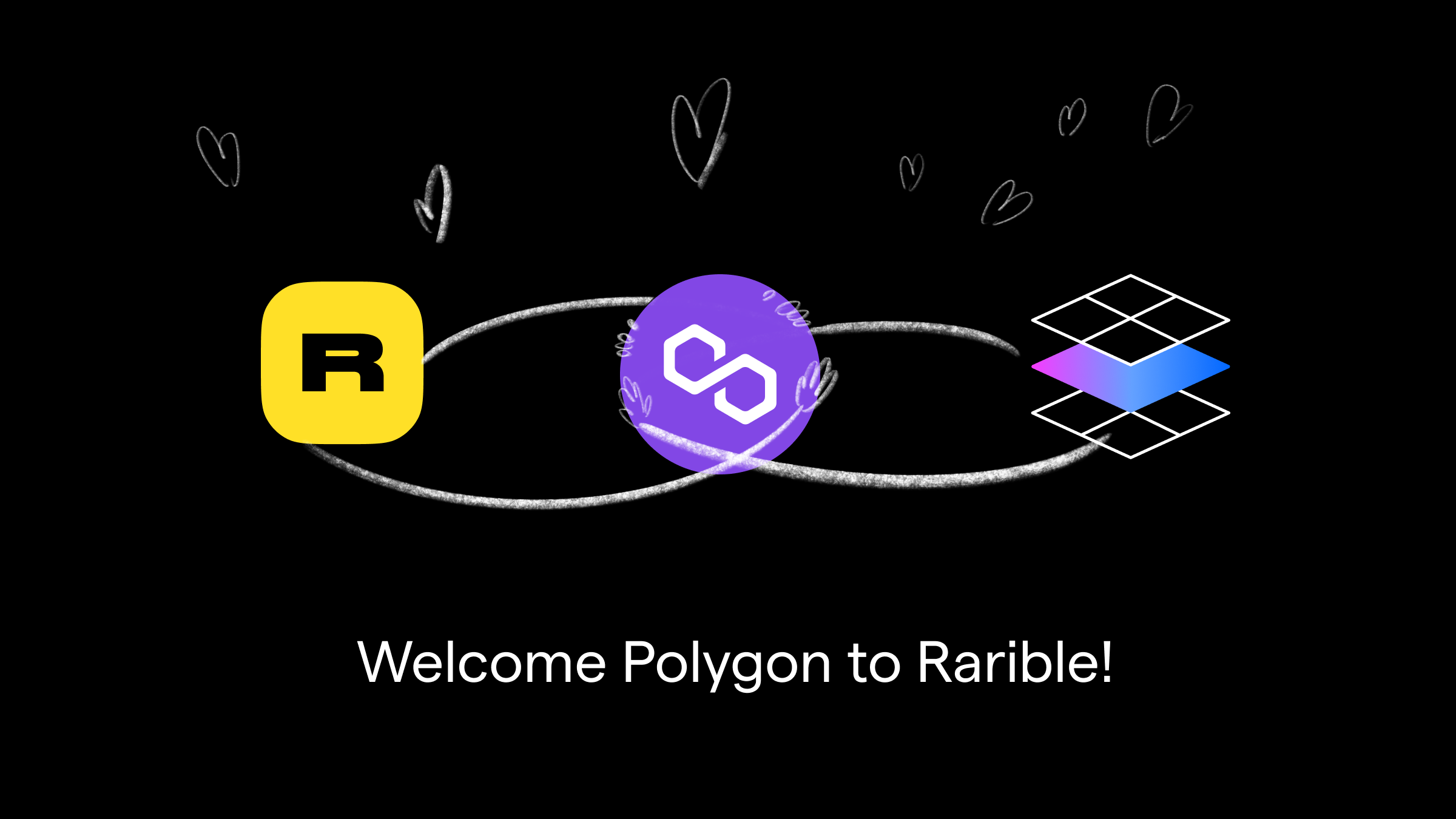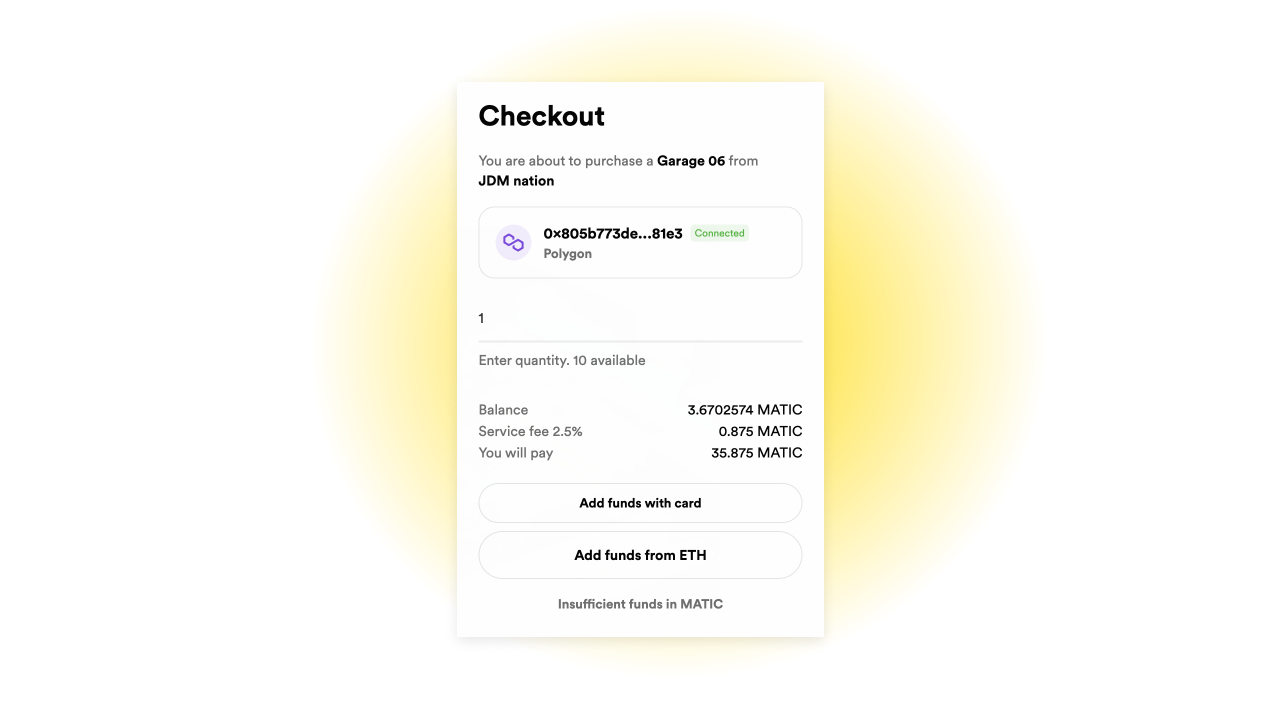Guide to Polygon on Rarible.com✨ NFT with low fees using your Ethereum wallet

Whether you're an NFT newbie or a seasoned veteran, you've probably rolled your eyes at Ethereum gas fees.
When you see the gas fee in the transaction confirmation window, it's like when you order food and your "$10 meal" is suddenly $25 at checkout because of the fees (Okay, maybe the 3 appetizers played a role as well...).
Some accept gas fees with a resigned sigh and press "confirm" in Metamask anyway. But gas fees also keep many enthusiastic creators and collectors from engaging with NFTs.
If gas fees are like delivery fees, then Polygon is like using a voucher that waives all the fees. That's right: the Polygon platform makes your transactions almost free. It’s not a completely different blockchain, however, in the sense that it leverages Ethereum’s infrastructure, aiming to upscale it. That’s what makes it so great for blockchain play-to-earn games, among other things.
That might sound like magic, but it's live right now on Rarible.com in beta!
In this article, you'll discover how Polygon makes life easier for NFT collectors and creators (no technical explanations, promise 🤝) and a step-by-step tutorial to what you can do with Polygon on Rarible.com right now.
Polygon? Like a Triangle?!
If you're having geometry class flashbacks when you think of polygon, we're sorry. But there won't be any homework or hypotenuses.
That's because we're not talking about shapes, but an Ethereum scalability platform. Polygon provides a range of technologies that make Ethereum more scalable.
Ethereum is like a highway that connects all the major cities in your country. Not many people have a car, so you can drive as fast as you want and get everywhere quickly. But as more people drive, there are traffic jams that drain your tank and cause delays.
This is what happened to Ethereum. When it was small, gas fees were cheap and transactions settled quickly. Now, as the world's second most popular blockchain, Ethereum has slowed down and become more expensive.
What do you do next? To stick with the driving example, you might leave the highway at the next exit and take a side road. It's smaller, but you can drive fast without constant stopping.
That's what Polygon is to Ethereum. Its blockchain is connected to Ethereum—you can use your Ethereum wallet and your Ethereum funds (as we'll see), but pay low gas fees.
Cheap minting and trading make NFTs more accessible and open up new use cases. That's not a secret anymore—which is why many NFT projects are launching on Polygon instead of Ethereum. Do you want to trade or create on Polygon too?
Here’s how.
How to use Polygon: Step by Step
Before we get started, there's some potential for confusion: Polygon has two main tokens. One is called WETH (for Wrapped ETH) and one called MATIC.
WETH behaves exactly like ETH and has the same price. You get WETH when you "bridge" Ether to Polygon, as in transfer it from one network to the other.
MATIC is Polygon's native token. Miners on Polygon's Proof-of-Stake blockchain get rewarded in MATIC.
With that out of the way, let's get to the step-by-step:

First of all: Good news! Because Polygon is built on Ethereum, you won't need to install another wallet.
The first time you interact with a Polygon-enabled website, your wallet will ask you to add Polygon to your list of networks. This will not cost gas and you can always switch back at the switch of a button.

When you first switch to Polygon, your wallet balance shows 0. Don't get scared—that's because you haven't bridged any tokens to Polygon. Your balance is still there on Mainnet Ethereum.
Bridge your assets via Polygon Bridge
Bridging is the next step. To bridge your ETH over to Polygon, click on any NFT you want to buy and click 'add funds from ETH'. It will redirect you to the Polygon bridge. There, after logging in with your Ethereum/Polygon wallet, you can decide how much ETH you want to turn into Polygon-enabled WETH.

Enter the amount, approve the transaction and your ETH is on Polygon once the transaction goes through (which might take some time depending on how busy the network is). This will cost a one-time gas fee, but after that, you're on Polygon, so gas is basically free!
You can bridge MATIC in a similar way, or convert the WETH you bridged to Polygon to MATIC via a Polygon-based decentralized exchange (DEX). Please do your own research before using a DEX, or bridging any ERC-20 tokens to Polygon, and make sure you understand the process.
Now you've got funds on Polygon—but what can you do there? Here's a few things you can do on Polygon on Rarible:
Mint NFTs
To turn your artwork into NFTs and list them for sale, the process is essentially identical to minting via Ethereum, you’ll just have to select Polygon after clicking “Create” on Rarible.com’s homepage. Make sure to tell your community that your NFTs are on Polygon so they can get some WETH ready before your collection sells out!
List NFTs
Secondary trading on Polygon is also live, meaning creators can list their custom collections on Rarible.com, and everyone can shop non-Rarible Polygon collections listed on Rarible.com.
However, please keep in mind that if you minted your Polygon collection via OpenSea, it can’t be imported to Rarible.com because it’s technically on the OS contract despite being displayed as a custom one. All remaining custom collections can be listed on Rarible.com.
Trade NFTs
If you want to get into NFT horse racing or other exciting things happening on Polygon, now you can! Head to our marketplace, select Polygon and find any collection you're looking for. You can now buy any NFT you see there for basically no gas.
Of course, you can also sell any Polygon NFT you hold on Rarible.com now. Happy trading!

